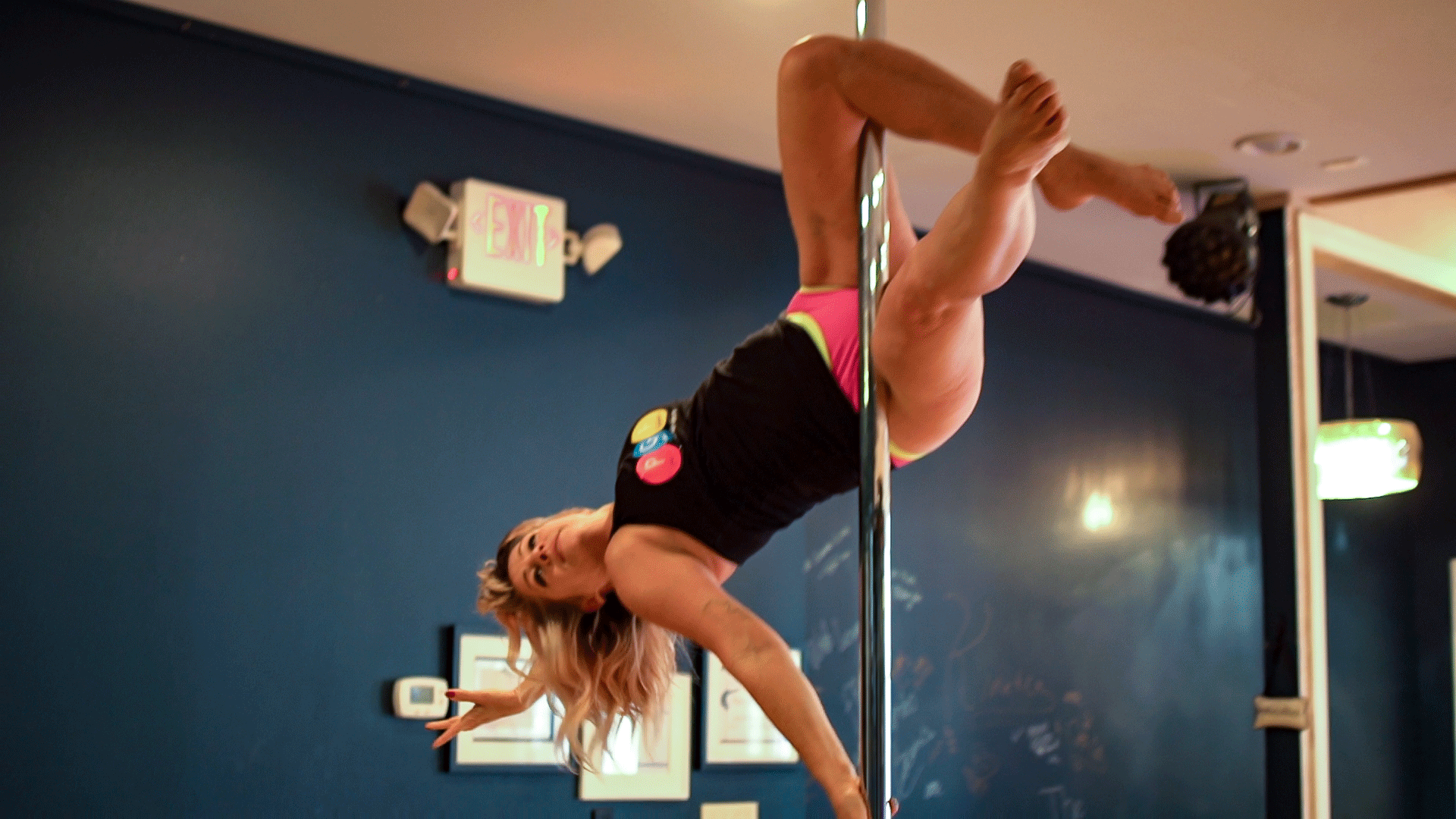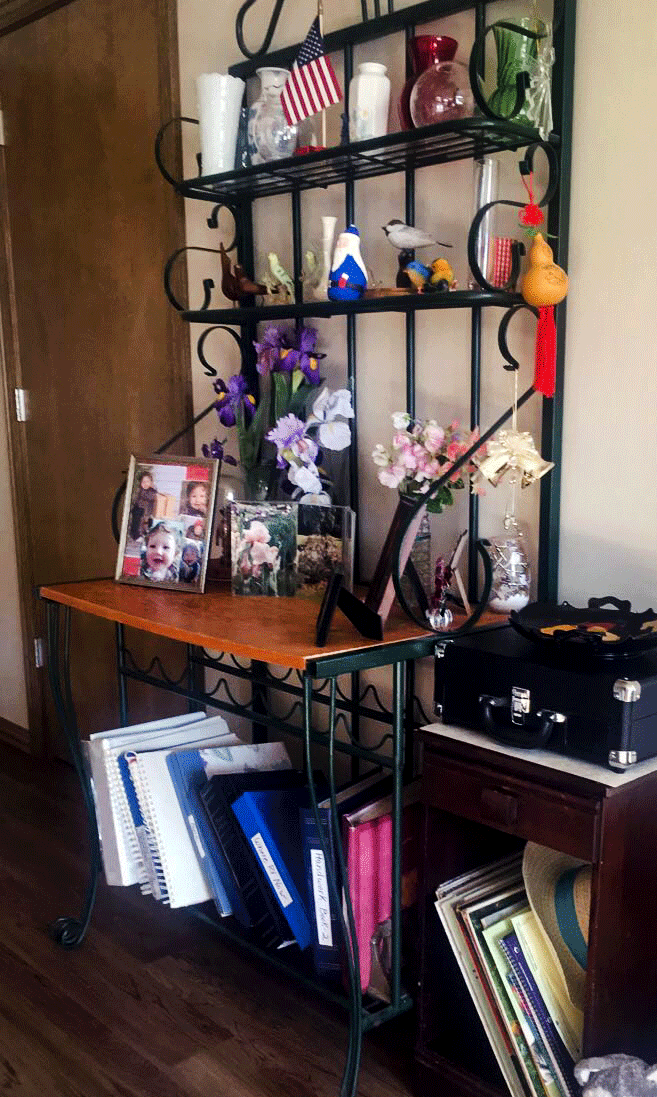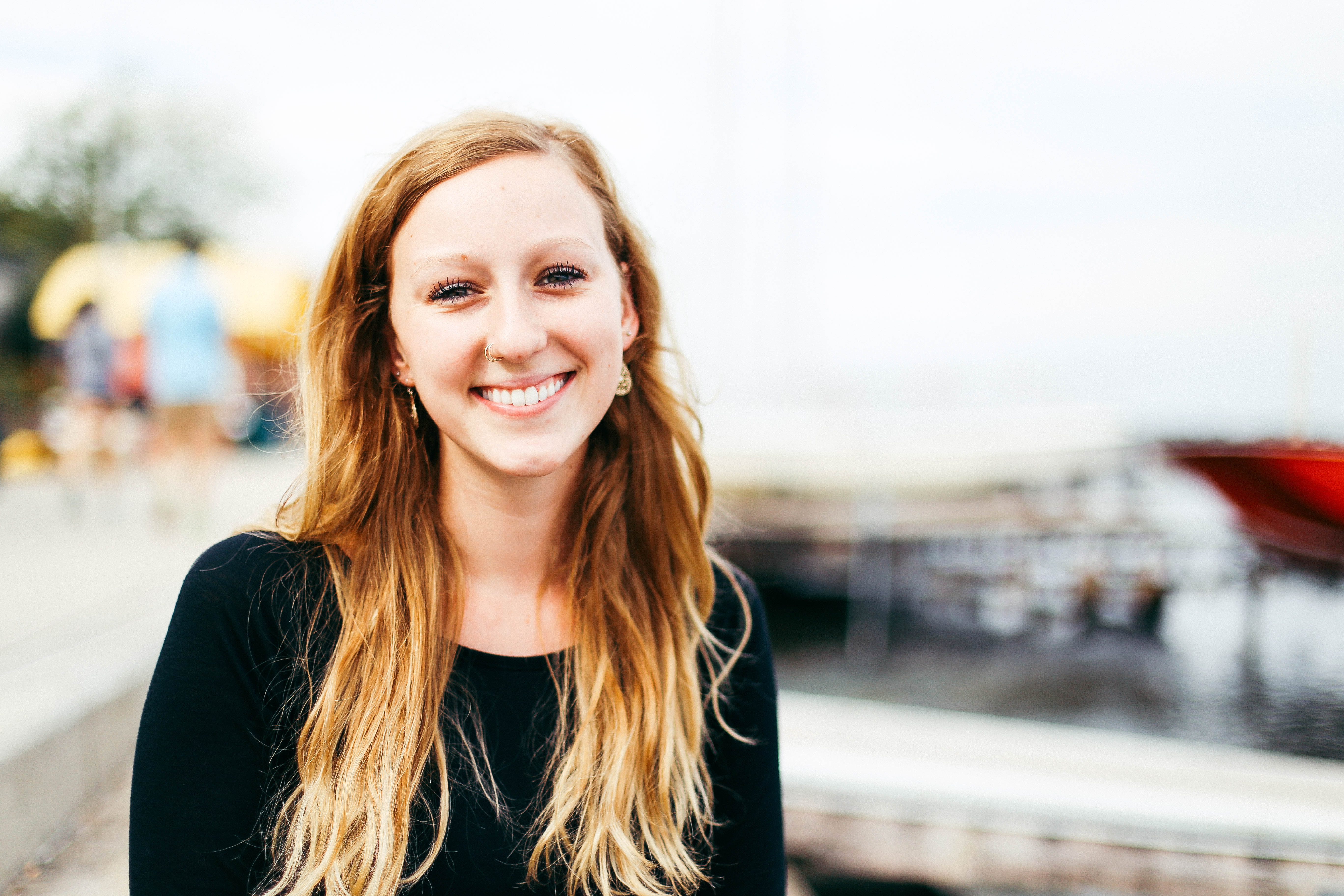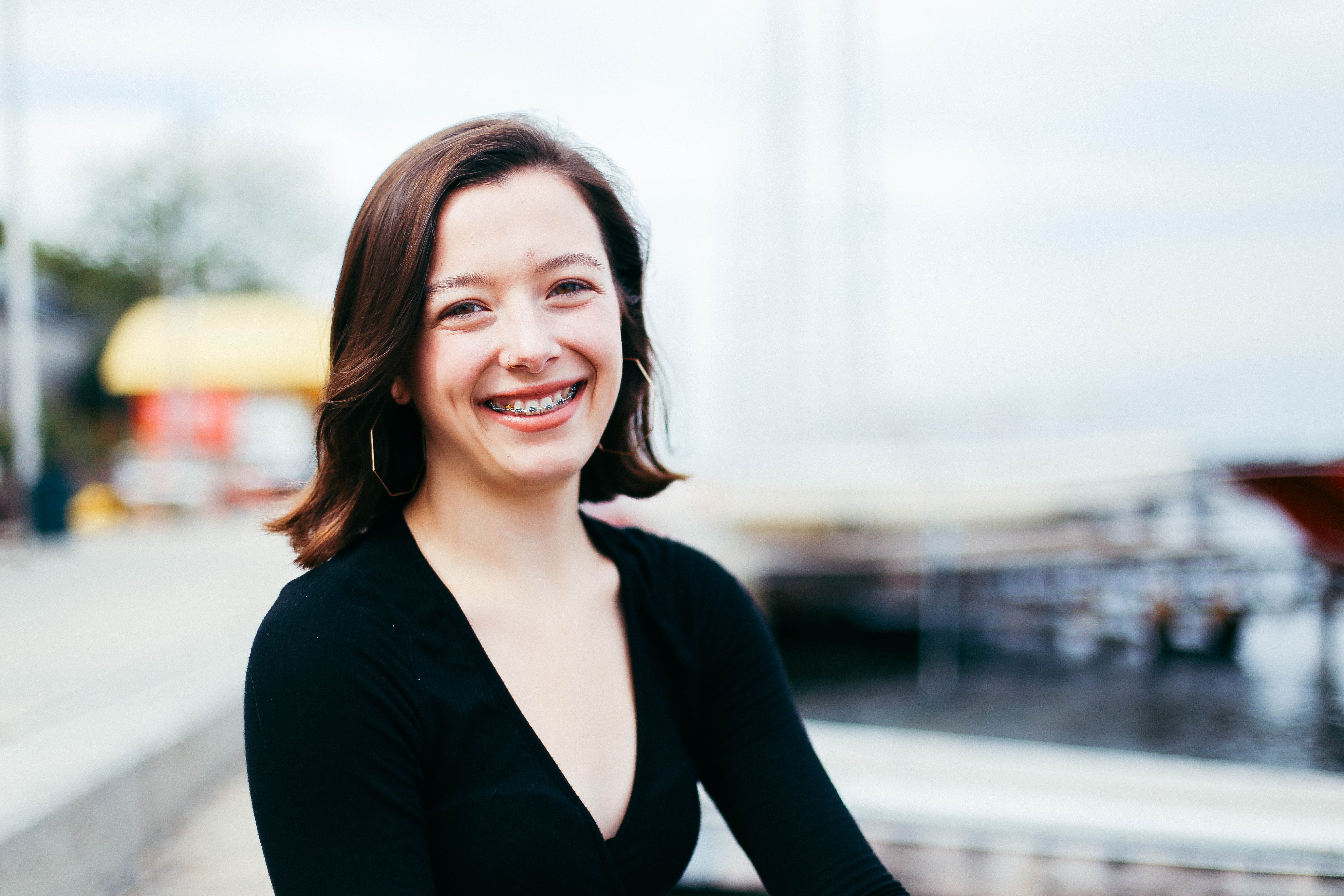


Published Dec. 5, 2017 // 24 minute read
Maxwell Love believes the current system of democracy in the United States is not working.
For this reason in June 2017, Love, 26, helped found Our Wisconsin Revolution. Sometimes in a person’s life there is an “ah-ha!” moment or an epiphany when the individual knows the path to take in life. This wasn’t the case for Love; for him, it was more gradual.
Having grown up in rural Wisconsin, Love says the people who raised him formed the foundation for the values he believes in today. Looking back, each person he had contact with provided him with a learning opportunity. He would often think, “What was that person trying to teach me?”
He believes these people helped him become the person he is today.
Love says that ever “since a young age [he] felt like politics is the way to actually make a change.” Coupled with experiencing major events like 9/11, wars in the Middle East and the Great Recession in 2008, as well as his upbringing, Love believes his affinity for politics led him to his current position as state organizer in Our Wisconsin Revolution.
“I felt like I was growing up in a time when those [events] were having a major impact on me, and they were showing me that in order to make change it has to be through politics,” Love says. So that’s what he decided to do — use politics as a way to enact change.
Our Wisconsin Revolution is a state-level branch of U.S. Sen. Bernie Sanders’ political action group, Our Revolution. During the 2016 campaign, Sanders pushed the idea that the country’s current democratic system is faulty and in need of revitalization. His campaign rested on three main concepts: revitalizing American democracy, empowering progressive leaders and elevating the political consciousness.
Our Wisconsin Revolution mirrors the core values of its parent organization and is using the momentum and infrastructure of the Sanders’ campaign as a foundation for its main mission: empowering people locally to create their own political community through establishing personal connections and relationships in order to ultimately enact change.
Love says a lot of the work the group is doing is simply that – establishing personal connections and relationships. He talks about his own experiences and the challenges that come with them, namely making assumptions.
“I think we can’t afford to keep making assumptions, and I think that’s what actually has been dividing people,” Love says. “You see somebody on the street, somebody wearing blaze orange, a construction worker, a nurse or a teacher, and they are dressed a certain way, are wearing certain clothing or have a bumper sticker. You can’t assume that person is a Republican or a Democrat or Independent or Green or a socialist. If you’re able to talk to them and be authentic about who you are and why you’re doing this, you can open that up in other people.”
One of the group’s current goals is to prepare its leaders for positions in politics. Wisconsin has 25 active chapters in Our Wisconsin Revolution, and the leaders of these chapters are all volunteers. Leaders are encouraged to go to conventions or retreats hosted by Our Wisconsin Revolution to learn “tangible skills” such as how to run a meeting, how to canvass an area or how to recruit more members.
Photos provided by Our Wisconsin Revolution
Often Love encourages chapter leaders and members to engage in thinking exercises similar to the ones he engages in on his own. He cites one incident where he created a “vision exercise” to help leaders picture a future they would be happy with.
Love began by asking questions, “Think back to the election, how did you feel the day after the election? Think about how you feel now; think about a year from now when we have a pretty serious set of state elections in Wisconsin. How do you want to feel after that? Where do you see us going?”
The leaders were encouraged to participate in this “big visioning” in order to think of “positive things we can do that will actually speak to people.”
Love says he doesn’t want the leaders of Our Wisconsin Revolution to point fingers and blame current elected officials. Instead he wants them to envision a goal and believe they are capable of achieving that goal and say, “We can do this, we can take this into our own hands.”
“We’re trying to do that [create a community], and we’re doing it in a way that I think is right, because it’s asking people locally in these areas to take on a lot of responsibility and do that themselves. It’s about empowering people locally to create that community,” Love says.
Love says Our Wisconsin Revolution will begin doing this by not viewing people as belonging to a political “camp” but rather by involving people in conversations about politics.
“We are trying to create a place that people consider a political home,” Love says. “So if they do feel disaffected or disenfranchised that they have somewhere they can go that their voice is heard, that they are a part of a community, that they have some fun doing it. It’s not just politics.”
On a personal level, Love tries to be genuine with everyone he comes into contact with. He believes this is essential to creating the kind of democratic system he envisions for the United States. In his own words — “authenticity is key.”
Due to this need for genuineness, Love believes he has changed as a person, discarding old biases and stereotypes and replacing them with understanding and tolerance. Being involved in Our Wisconsin Revolution has also led Love to rethink his values and where they came from.
He hopes that, drawing from his own experience, he will be able to help others reconnect with their values, deconstruct any biases they may have and ultimately forge deep relationships with fellow community members.
“We are all Wisconsinites. We are all Americans,” Love says, “So how do we actually create an America or a Wisconsin for all of us?”

After days in the hospital, sitting by her father’s bedside, Kyra Weiland needed a break. Becoming the primary caregiver of an ill parent could exhaust anyone, but Weiland also needed to juggle her roles as a wife, mother and Madison business owner.
One evening, after dropping her daughter off at ballet class, Wieland planned to fill the time with a class of her own — ballroom. After being turned away for not having a partner, she sat frustrated in a nearby parking lot. From across the street, she saw the lights of a neon sign reading, “pole dancing studio.” She drove over, parked and started to Google.
“It seemed so intimidating, not from a physical standpoint but from an emotional standpoint,” Wieland says.
The thought of associating herself with pole dancing’s stigmas with, as well as the generalizations regarding acceptable body types and ages of dancers, intimidated Wieland. However, she pushed through her discomfort and enrolled in her first class.
She would continue attending this studio with goals of relieving stress and providing a physical and mental challenge for herself. This commitment propelled Wieland into a journey of self-discovery, resulting in a new, life-changing passion.
Rewind five years. Wieland owned the Madison Records Center, a successful data storage company in the heart of the state. She paired her business attire with a signature red lip — a trick learned from her days as a flight attendant — to demand attention from business rooms filled with men.
Though she thrived in her office environment and eventually merged with a larger company, Wieland knew the corporate life was not for her. After her father became ill, she knew she wanted more out of life. It didn’t take a second thought for Wieland to quit her job and move into the hospital with her father.
“It just was a matter of deciding that he needed me more, having a family that was accepting and being in a financial position that I was able to do that. I took advantage of that,” Wieland says.
Despite being fearful of her father’s potential response to pole dancing, she continued taking classes in Madison. Though she never told him of her newfound passion, a few words of advice from him would eventually launch her whole-heartedly into the industry before his death in 2012.
“He said ‘Sweetheart, I want you to live and to love scandalously,’ and it terrified me,” Weiland says. “That was such a strong, important message to me and my life.”
 After only a few classes, Wieland fell in love with pole dancing. She searched the internet for a stand-alone pole to install at her house and instead found a studio for sale in nearby Rockford, Illinois. She did some research, contacted the owner and began connecting with a rich network of dancers in hopes of finding a studio to call home.
After only a few classes, Wieland fell in love with pole dancing. She searched the internet for a stand-alone pole to install at her house and instead found a studio for sale in nearby Rockford, Illinois. She did some research, contacted the owner and began connecting with a rich network of dancers in hopes of finding a studio to call home.
Though the Rockford studio was not her vision, its pending closure in 2015 motivated Weiland to provide a supportive, stable home for the women she had grown so close to. Her solution was to open Pure Gravity Fitness, an aerial arts studio sitting on the middle of the Wisconsin-Illinois border in Beloit, Wisconsin.
“People were a little nervous that we were bringing a business ‘like this’ to downtown Beloit, but it was just my time to give back to a community.”
With classes offered in pole dancing, barre, flexibility and aerial silks (a type of acrobatic performance using hanging ribbons), Pure Gravity Fitness teaches practical skills as well as attempts to promote self-love and acceptance to its students. These priorities have supplied a community and safe haven previously unavailable in Beloit.
“I tell women that the pole does not discriminate, it rotates,” Wieland says. “You can be any shape, any size, and gender. It doesn’t matter. [The pole] is there to be your partner, [and it] only takes as much energy from you as what you give.”
Despite these positive lessons, pole dancing’s association with stripping and the sex work industry continues to cause an intense negative stigma. Even with a recent push by sex workers and their networks to decriminalize the industry — as well as debates around including pole dancing in the Olympics — negative images of the community remain.
Beyond promoting a more positive attitude about pole dancing to her individual students, Wieland also strives to make Pure Gravity Fitness an environment of inclusivity.
“I don’t care if [students] come from an exotic dance background or working as a stripper to pay their bills, feed their children and to get an education. I don’t care if they’re going through a divorce. I don’t care if they weigh 200 pounds. I don’t care if their hair is black, blue, green or purple,” Wieland says. “They’re here to have the freedom to move and the freedom to love themselves, and that comes first.”
This open, welcoming environment has brought a wide variety of students to Pure Gravity Fitness’ classes, from middle-aged wives and mothers to drag queens, athletes and construction workers.
Recently, Wieland welcomed a mother-daughter pair in for a stretch class. As the evening went on, she was pleasantly surprised by a whisper from the mother asking, “Do you ever think I could pole dance?”
“I was like ‘Of course. You can do anything you want with that body,’ and she said, ‘Well I have to ask, is there a weight limit?’”
This worry is common for those new to pole dancing. Questions about physical ability and restrictions frequently create anxiety, especially for women. However, Wieland knew exactly how to respond:
“I said, ‘Well the weight limit [of Pure Gravity Fitness’ poles] is 2,000 pounds so…’”
According to Wieland, the question is not whether a person is capable or whether the equipment will allow them to pole dance. Rather, it is about getting past your fears and putting in an effort, no matter who you are.
“We’re dancers. We’re athletes. We’re mothers. We are daughters and sisters and wives. We just really encompass everything here,” Weiland says.
Pole dancing has cultural roots in Chinese and Indian dance, as well as influences from exotic and circus-based performance. While originally emphasizing acrobatics in pre-12th-century China, other elements of strip tease, belly dancing and other performative tastes have become central.
The “Hoochi Coochi” dancers of the 1920s were one of the earliest representations of pole dancing in the United States, with performers gathering for traveling fair crowds. Other records show 1960s performances in Oregon, with the movement picking up speed in the 1980s and 1990s.
Though pole dancing is now mainly associated with sex work, the emerging focus on health and fitness brings the practice from strip clubs to more private dance studios. This new form uses influences of ballet, acrobatics and yoga to combine the performative roots of stripping with the physical challenges of a high-intensity workout.
As a former triathlete and Crossfit athlete, Wieland finds the experience and effects of pole dancing to be incomparable to any other fitness regimen.

“This form of exercise is way more personal than just getting on a treadmill [or] picking up a bar full of weights, and it’s more dynamic,” Wieland says. “When you’re running on a treadmill or lifting a weight, you’re doing one movement, but when you’re using a pole… there’s an emotional gain [and] there’s a physical gain. You’re using every part of your body: mind, heart, soul, muscles, arms, legs. And it’s complex.”
The uniqueness of this form has also fostered growing interest and participation in competitive pole dancing. In 2008, the US Pole Dance Federation became the first organization in the United States to host professional pole competitions. Also, the Pole Sport Organization now holds the world’s largest pole competition series, with more than 2,000 dancers attending its events all over the United States, Canada and Switzerland.
“[Pole dancing] is an artistic freedom to just express, emotionally, what you’re feeling,” Wieland says. “Some of us are vulnerable; some of us feel strong and powerful; some of us are just looking for a friend, and it’s as simple as that.”
As her children get older and leave home and her husband approaches retirement, Weiland finds herself looking to other adventures on the horizon. Yet, pole dancing never leaves her mind.
Though Wieland has developed an extraordinary love for her studio and the industry, she recognizes that she will not be physically able to continue dancing forever. As she plans to celebrate her 50th birthday on December 7, she lays the future of Pure Gravity Fitness in the hands of its community.
Whether entrusting another teacher with ownership of the studio or asking the entire community to contribute further and keep the business alive, Wieland knows she will eventually have to move on. Even with this long-term focus, however, her decision has not come easily.
“The only thing that would ever stop me from closing my business or selling it — what keeps me from doing that — is not having a space or the freedom to move and be up there,” Wieland says.
Wieland still has big dreams for herself in the pole industry. She would love to open a second studio in the Madison area, if not for the limits on her time and energy. Though she would miss the freedom of moving in her own studio, Wieland believes she will find other ways to express herself when she decides to leave Pure Gravity Fitness.
It isn’t unusual that Edna Louise Vovk has a Facebook account to stay up-to-date with our ever-changing world. What is unusual is that Vonck is 102 years old, and for her, living in an ever-changing world is nothing new.
Born in 1915 in the small town of Bagley in northeastern Wisconsin, Vonck has witnessed some of the biggest events and social changes in American history: both World Wars, the invention of the television, the Civil Rights Movement. For many people, these events often feel intangible, confined to pages of history books. But for Vonck, these events are living memories.
When someone has lived through as many historical and cultural changes as Vonck, it is worthwhile to consider how these changes affect your life. Can a person be the same in the 21st century as she was in the 1930s? Do individuals always evolve, picking up new interests and beliefs in order to leave olds ones behind? Or are there certain constants people carry with them, no matter what the time period might be?
For Vonck, there is a part of her identity that has remained constant over all her years: her desire to create as a way to give back to her community. Ever since Vonck was young, she has had an impulse to make things whether it be growing flowers, writing poetry or crocheting clothes. Today, Vonck uses her talent of knitting and crocheting as a way to continue making a difference in the world.

Vonck currently lives in an assisted living community in Allouez, Wisconsin, a small suburb of Green Bay. While most of her neighbors attend bingo in the common area during the day, Vonck spends her time knitting for Project Linus, a nonprofit organization that provides blankets to children in need.
“I just don’t think bingo is the best use of whatever time I’ve got left,” Vonck says.
Vonck first learned to crochet and knit during the Great Depression. Through Federal Project Number One, a New Deal Program passed in 1935, people were paid to teach crafts projects as a way for them to receive income and provide others with transferable skills. Vonck attended classes at her neighbor’s house when she was 21. She has been knitting ever since.

Vonck takes care to keep track of all the work she’s completed. A row of giant binders in her apartment contains photos of all the items she’s made, along with a spreadsheet of where they’ve been sent. So far, she’s made close to 100 items, and she often has several projects going at once.
“I crochet during the day on dark colors and in the evening on lighter colors,” Vonck says. “Right now I don’t have any caps on hand, but I’ll make them toward the fall.”
The caps Vonck knits are for newborn babies at hospitals in the Racine area.
“They put a cap on the baby when it’s born,” Vonck says. “I don’t know why. I guess they gotta keep their heads warm.”
In addition to caring for children in Project Linus and the hospital, Vonck has several children of her own, though they are all senior citizens now. Vonck had three children from her first marriage, and then welcomed four stepchildren when she married again at the age of 71.
“Even being married that late, we were married almost 24 years before he died,” Vonck says. “Some people don’t even stay together that long in their first marriage.”
Six years after Vonck’s first husband Valdemar Christenson died, Vonck invited Norbert Vonck to visit her farm. Norbert had recently lost his wife, and the two were friends from their previous marriages. Neither liked being alone.
“It was fall and I said, ‘Come go deer hunting. There’s deer running around eating everything in my garden,’” Vonck says. “So he did, and we got along real well.”
The two were married shortly after.
Vonck has always been an independent and creative woman, never afraid to express herself or limit herself by taking on a lot of work. Growing up, she would take a horse and buggy to weekly piano lessons in Suring. She also wrote poetry and often helped two of her brothers who were in the military band write scripts for their music shows.
On the farm, Vonck operated the machinery, driving tractors and caring for the cows they kept in their 12-stall barn. Two photos of the farm hang near the entrance of Vonck’s apartment, one taken from an airplane in the mid-20th century, the more recent one taken by a drone.
Like the photos of the farm, there are many other clues into Vonck’s long life lying around her apartment. Framed paintings of flowers she used to raise in her garden, poetry books and of course the basket of yarn and knitting needles sitting next to her chair in the living room area.
The apartment is a lot like Vonck. It may look ordinary, but when you start asking questions and taking a closer look, you realize there are many stories to be told. Whether or not Vonck agrees with this is another matter.
“I wouldn’t say my life was interesting,” Vonck says, “but I wasn’t unhappy.”

 Samantha is expecting to graduate in December of 2017 with her master’s degree in journalism.
Samantha is expecting to graduate in December of 2017 with her master’s degree in journalism.
Samantha earned her bachelor’s degree in English at UW-La Crosse. She’s a Wisconsin native, but she hopes to explore the rest of the world after she graduates, and if not the world, then at least the United States.
Specializing in magazine writing, Samantha enjoys writing about the environment and issues she thinks are important.
 Darby Hoffman is a senior double majoring in Journalism: Reporting and Gender & Women’s Studies. With a love of words and social justice that developed from a young age, she aims to promote creative, inclusive content through her work at Curb.
Darby Hoffman is a senior double majoring in Journalism: Reporting and Gender & Women’s Studies. With a love of words and social justice that developed from a young age, she aims to promote creative, inclusive content through her work at Curb.
Beyond academics, Darby has spent her college career dedicating her heart and soul to Moda Magazine, UW-Madison’s signature life and style publication, where she advocates for the importance of creative, relatable and substantial content. Away from campus, you can find her at home – enjoying sun-lit rooms, coffee and cuddles with her dog (read: fur baby).
Upon graduating this May, Darby hopes to relocate to New York City and pursue a career in feminist magazine publishing. Her dream publications include Girlboss, Nylon and Teen Vogue (place of employment for her role model, Elaine Welteroth). She currently seeks advice on living in a shoe-box-sized apartment with a pup who loves to play fetch. All suggestions are welcome.
 Laura Schmitt is a senior studying journalism and English with an emphasis in creative writing. On campus, she works at the Writing Center as an undergraduate Writing Fellow, serving as a peer writing tutor for students across all disciplines.
Laura Schmitt is a senior studying journalism and English with an emphasis in creative writing. On campus, she works at the Writing Center as an undergraduate Writing Fellow, serving as a peer writing tutor for students across all disciplines.
When she isn’t tucked away in a corner of College Library studying, Laura enjoys exploring Madison, watching true-crime documentaries and listening to Broadway musicals as she writes fiction. After graduation, she hopes to move to New York City and pursue her dream of becoming the next Liz Lemon and/or Joan Didion. Aesthetically speaking, “the next Joan Didion” is most realistic because Laura, too, is 4 feet 11 inches tall and often seen wearing dark sunglasses.